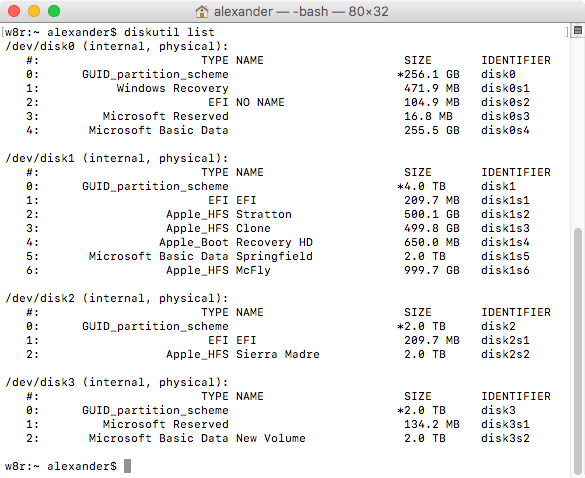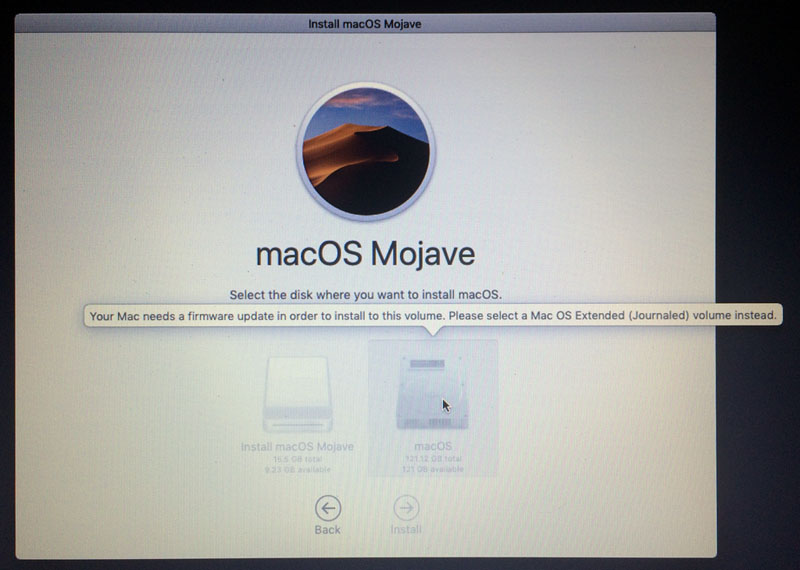
- #MAC COMMAND LINE DISK UTILITY HOW TO#
- #MAC COMMAND LINE DISK UTILITY MAC OS#
- #MAC COMMAND LINE DISK UTILITY PLUS#
- #MAC COMMAND LINE DISK UTILITY FREE#
- #MAC COMMAND LINE DISK UTILITY WINDOWS#
It’s important to keep in mind that if you run the eraseDisk command, the target disk is going to lose all its data, so make sure you are erasing the proper disk. The syntax is going to look like this: Diskutil eraseDisk JHFS+ Empty /dev/disk5s2
#MAC COMMAND LINE DISK UTILITY MAC OS#
Let’s say the disk I want to erase has “/dev/disk5s2” as its identifier and I’m going to use Mac OS Extended Journaled (JHFS+) as the system format type and name it “Empty”. This is the syntax we need: Diskutil eraseDisk FILESYSTEM DISKNAME DISKIDENTIFIER Then pick a name and a system format type. Once you have found the proper drive to erase, just copy its identifier so you can use it for the next command. This is going to list all the mounted drives on your Mac. Start off by running the following command in the command line: Diskutil list Here I'll show you how you can erase and format a disk using the command line. To do that, the only thing you need is a bit of precise syntax to make sure that you are erasing the proper disk. But some Mac users might need to erase them from the command line on Mac OS. Disk Management is buried several layers deep, so having a faster.

If you see a message like the following: The volume Macintosh HD was found corrupt and needs to be repaired You will want to fix that by issuing the repair disk command next. If no errors are reported, repairing the volume is unnecessary.
#MAC COMMAND LINE DISK UTILITY WINDOWS#
A quick way to open the Disk Management utility in Windows is from the Command Prompt. Just like running Disk Utility from the GUI, the command line may take a while. Or, open Task Manager via Ctrl + Shift + Esc and go to File > Run new task. Once you have done that, you need to check the names of the volumes that are currently connected to your system.

On the far right, you’ll see an IDENTIFIER column that column contains the identifier that diskutil needs.Most users use Disk Utility to erase a disk or hard drive. Alternatively, press WIN + X and select Disk Management. The first thing you need to do is start Terminal (/Go/Utilities/Terminal). In Unix, all devices appear as part of the file system tree, and in macOS. If you didnt have a second Mac to run target disk mode or have Disk Arbitrator on the external to block the mounting of the faulty drive this makes more sense.
#MAC COMMAND LINE DISK UTILITY FREE#
Just use diskutil list to see a list of all drives and partitions. There’s just one last bit of information you need to know to erase the free space on a hard drive from the command line. Command line equivalent of Disk Utility, which is not diskutil, to obtain UUID. Consider using APFS encryption (FileVault).īut how do you figure out what to list for device, which is the disk (or partition) that has the free space you’re trying to securely erase? diskutil can provide that information, too. Strongly-encrypted data can be instantly "erased" by destroying (or losing) the key (password), because this renders your data irretrievable in practical terms. The modern solution for quickly and securely erasing your data is encryption. Modern devices have wear-leveling, block-sparing, and possibly-persistent cache hardware, which cannot be completely erased by these commands. NOTE: This kind of secure erase is no longer considered safe.
#MAC COMMAND LINE DISK UTILITY PLUS#
O 4 - Three-pass erase, consisting of two random fills plus a final zero fill. On the side, select the disk you want to repair. Now go to 'Disk Utility' and click on Continue.

Once restarted, press and hold the 'Command' and 'R' keys until the Apple logo is on the screen. Go to 'Apple Menu' and click on 'Restart'. O 2 - Seven-pass erase, consisting of zero fills and all-ones fills plus a final random fill. Here I will show you the step by step guide on hard drive repair on Mac OS. Ownership of the affected disk is required. If you need to erase all contents of a partition but not its hosting whole-disk, use the zeroDisk or randomDisk verbs. Erasing freespace on a volume will leave your files intact, indeed, from an end-user perspective, it will appear unchanged, with the exception that it will have attempted to make it impossible to recover deleted files. Secure erasing makes it harder to recover data using "file recovery" software.Įrasing a whole-disk will leave it useless until it is partitioned again.
#MAC COMMAND LINE DISK UTILITY HOW TO#
Within the man pages, you’ll find the explanation for how to securely erase a disk’s free space using diskutil: secureErase level deviceĮrase, using a "secure" (but see the NOTE below) method, either a whole-disk (including all of its partitions if partitioned), or, only the free space (not in use for files) on a currently-mounted volume. To find out about diskutil in detail, type man diskutil at the Terminal prompt. Proceed with caution, and make sure your backups are current before you try any of the following.) (Please note that, as with many Terminal commands, there’s a chance of Really Bad Things happening if you make a mistake with the following instructions. What if you want to do this from Terminal instead? In Terminal, a program named diskutil provides most of the features of macOS’s Disk Utility.


 0 kommentar(er)
0 kommentar(er)
